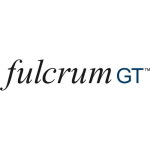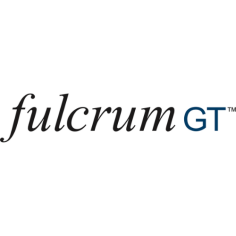Navigating enterprise platforms and best-of-breed software with Fulcrum GT
Though best-of-breed systems have been dominant in the legal market for some time, change may be coming for law firms willing to embrace it, says Martin Telfer, CIO, CISO/SVP and EMEA Chief at Fulcrum GT. Here, he outlines ways law firms can determine the best approach to take in the future.
The professional services industry, the technology industry, and the global business world as a whole face continuous and accelerating change and disruption. The pandemic and looming economic downturn are driving progress for virtually every company, changing how people work and how business is done.
As firms evaluate opportunities and risks, and set their strategies, one key decision companies must make is which software platform will support their needs. One approach is to use an enterprise software platform (ESP), which provides a comprehensive solution, covering nearly all the company’s needs. Another is to take a best-of-breed (BoB) approach, which involves multiple, specialised solutions that address specific needs, then managing the interfaces, or ‘glue’, so these solutions can exchange data as required.
Each approach has pros and con
s – some real, some perceived. One pro of ESP is that it helps reduce the complexity and fragmentation that often plague firms’ operations, especially as it relates to data quality, lowering costs as a result. Further, ESPs are typically built on best practices which, if adopted, can lead to additional efficiencies and savings through automation and optimal utilisation of resources, especially as the firm grows. One perceived downside is that ESPs, despite being highly configurable, can be seen as inflexible. BoB solutions, on the other hand, are seen as very specific and easy to fit into firm’s existing processes.
And herein lies one of the main problems – current processes and multiple ‘sources of truth’. In many law firms, these result from ad hoc development and cobbling together of systems over many years. They have been adapted, slowly, for new technologies and geared towards ‘keeping partners happy’.
Until relatively recently, this was fine, but increasing cost pressures are now pushing law firms to be ever more efficient to maintain profits and attract the best talent. Suddenly, the classic ‘white glove’ service looks expensive, and best practices are extremely important to remaining competitive.
If we factor in the effects of globalisation, ESPs have another advantage: being compliant with the ever-increasing regulations around doing business internationally. ESP providers invest heavily in making sure their solutions are secure, scalable, compliant and certified. This eliminates a major issue with multiple BoBs, which are typically provided by specialist vendors that may not have the capacity to keep pace with global developments in tax, privacy and reporting. The very real and terrifying prospect of a data breach is also substantially reduced by using a certified, secure platform.
Additionally, one by-product of globalisation is the prevalence of law firm mergers. Firms that merge, don’t actually ‘merge’ if using BoB. In contrast, ESP allows for a firm to operate as one, unified business.
It’s a convincing argument, yet many law firms stick with the BoB approach, perhaps because adopting best practices means changes, which is difficult to manage. As the mantra goes, “Change management is not about making people happy – it’s about managing their anger”. But the benefits are tangible and significant.
Many organisational decisions are data-driven and can involve predictive analytics, a prerequisite for which is high-quality, real-time data. In an ESP, data is all in one place, and so is relatively easy to apply analytics to. That includes historical and predictive data, as well as to data providing valuable insights into past and future trends. With BoBs, this process is much more challenging and relies on the regular, error-free synchronisation of data from multiple sources.
The case for ESP seems strong, so why aren’t more firms adopting this approach? There is a lingering perception that ESP projects always take longer, cost more, and ultimately don’t deliver. Years ago, ESP projects would begin with a blank sheet of paper and involve lots of customisation and development. That is no longer true – there are ‘model firm’ solutions that meet 90-95% of requirements on day one, and remove the uncertainty of an unproven solution, while allowing the flexibility to connect to third-party tools through modern interfaces and APIs. This means that projects can be delivered in compressed timeframes with cost certainty and low risk.
The main case for BoB is, typically, that the individual solutions are very feature-rich, but does any firm really need all the functionality of these custom solutions? In practice, many of the features that looked so good in the selection process are rarely used. Even MS Word, the lawyer’s daily tool, is rarely stretched to capacity. Perhaps a car analogy is appropriate here. Good ESPs are like Range Rovers – fast, comfortable, safe, able to carry up to seven passengers and very capable off-road as well as on. The much more expensive option would be a fleet of specialist vehicles and the associated overhead of managing them. Plus, if conditions suddenly change, the Range Rover can adapt quickly, and in many cases automatically, to the challenge. SUVs are the most popular vehicles in the market today – maybe that is a clue!



